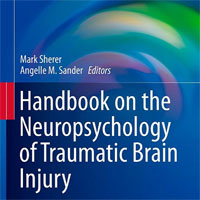Tag: mortality
The status of intensive care medicine research and a future agenda for very old patients in the ICU
The "very old intensive care patients" (abbreviated to VOPs; greater than 80 years old) are probably the fastest expanding subgroup of all intensive care unit (ICU) patients. Up until recently most ICU physicians... read more
Association of β-Blockers With Functional Outcomes After Acute Myocardial Infarction
This cohort study uses Minimum Data Set and Medicare claims data to assess the association of β-blocker use after acute myocardial infarction with functional decline, mortality, and rehospitalization among long-stay nursing... read more
MR-proADM Accuracy Superior for Sepsis Mortality Prediction
The use of novel sepsis biomarkers has increased in recent years. However, their prognostic value with respect to illness severity has not been explored. In this work, we examined the ability of mid-regional proadrenomedullin... read more
Clinical practice guideline on diagnosis and treatment of hyponatraemia
Hyponatraemia, defined as a serum sodium concentration <135 mmol/l, is the most common disorder of body fluid and electrolyte balance encountered in clinical practice. It can lead to a wide spectrum of clinical symptoms,... read more
How survival of cancer patients in critical care has improved in the last 3 decades
Comprehensive care for critically ill patients with cancer is a collaborative effort, and close cooperation between oncology as well as palliative and critical care is essential. Collaborative decision making is a cornerstone... read more
Interventions to improve antibiotic prescribing practices for hospital inpatients
This review includes 221 studies (58 RCTs, and 163 NRS). Most studies were from North America (96) or Europe (87). The remaining studies were from Asia (19), South America (8), Australia (8), and the East Asia (3). We found... read more
Deaths After PCI: Study Compares Public Reporting Models Both With and Without Cardiogenic Shock
Three distinct models for reporting risk-adjusted mortality rates among hospitals and physicians performing PCI in New York State demonstrate a high degree of agreement, despite variation in how they handle the inclusion... read more
Critical Care Patients Benefit From Restrictive Transfusion Strategy
Although a restrictive transfusion strategy significantly reduces the risk for 30-day all-cause mortality in critical care patients, its benefits are less clear in perioperative patients, according to a meta-analysis by a... read more
Lower C. difficile mortality with vancomycin than metronidazole
Treating Clostridium difficile infection with vancomycin achieves the same recurrence rates as does treatment with metronidazole, but with a significantly lower 30-day mortality, new research suggests. The 30-day mortality... read more
A randomized placebo-controlled phase II study of a Pseudomonas vaccine in ventilated ICU patients
This phase II study has shown that IC43 vaccination of ventilated ICU patients produced a significant immunogenic effect. P. aeruginosa infection rates did not differ significantly between groups. In the absence of any difference... read more
Culture-Negative Severe Sepsis: Nationwide Trends and Outcomes
CNSS among hospitalized patients is common, and its proportion is on the rise. CNSS is associated with greater acute organ dysfunction and mortality. Having CNSS is an independent predictor of death. Of 6,843,279 admissions... read more
Towards precision medicine for sepsis patients
Over the last decade it has become clear that the immunological response and clinical course in sepsis patients is too complex to simply regard it as hyperinflammation-induced organ failure. In contrast to the previous belief... read more
Beta-Blockers Linked to Reduced Mortality in HFrEF
Beta-blockers are associated with significantly reduced mortality, but not hospitalizations, in patients with heart failure and reduced ejection fraction (HFrEF) and atrial fibrillation (AF). The researchers found that β-blockers... read more
Adrenomedullin: a marker of impaired hemodynamics in cardiogenic shock
Bio-ADM is a valuable prognosticator and marker of impaired hemodynamics in CS patients. High levels of bio-ADM may show shock refractoriness and developing end-organ dysfunction and thus help to guide therapeutic approach... read more
Co-infection is Frequent in Patients Hospitalized with Influenza
According to a recent article published online in Intensive Care Medicine, co-infection occurs commonly in patients with influenza-related infections that require intensive care unit (ICU) admission. Influenza infection causes... read more
Severe Adult ARDS Prediction Models
Outcomes and survival prediction models for severe adult acute respiratory distress syndrome treated with extracorporeal membrane oxygenation. Although the use of ECMO for severe refractory ARDS has markedly increased since... read more
Glutamine, fish oil and antioxidants in critical illness
We hypothesize that the harmful effect of IMHP compared to HP enteral nutrition in a heterogeneous group of critically ill patients is limited to the medical critically ill patients and mediated by an early increase in (epa... read more
Three-year mortality in 30 day survivors of critical care with AKI
Acute kidney injury was not an independent risk factor for 3-year mortality among 30-day survivors. Increased 3-year mortality among patients with AKI who survive critical illness may not be related to AKI per se, but rather... read more
Neuroprotective Effects of the Glucagon-Like Peptide-1 Analog Exenatide After Out-of-Hospital Cardiac Arrest
Acute administration of exenatide to comatose patients in the ICU after OHCA is feasible and safe. Exenatide did not reduce neuron-specific enolase levels and did not significantly improve a composite end point of death and... read more
Skeletal muscle quality as assessed by CT-derived skeletal muscle density is associated with 6-month mortality in mechanically ventilated critically ill patients
Low skeletal muscle quality at ICU admission, as assessed by CT-derived skeletal muscle density, is independently associated with higher 6-month mortality in mechanically ventilated patients. Thus, muscle quality as well... read more
Lower threshold for abdominal aortic aneurysm repair linked to reduced mortality
The study examined the differences between the threshold of repair and aneurysm-related mortality in England and the United States. The rate of hospitalization due to a ruptured aneurysm and aneurysm-related death was significantly... read more









